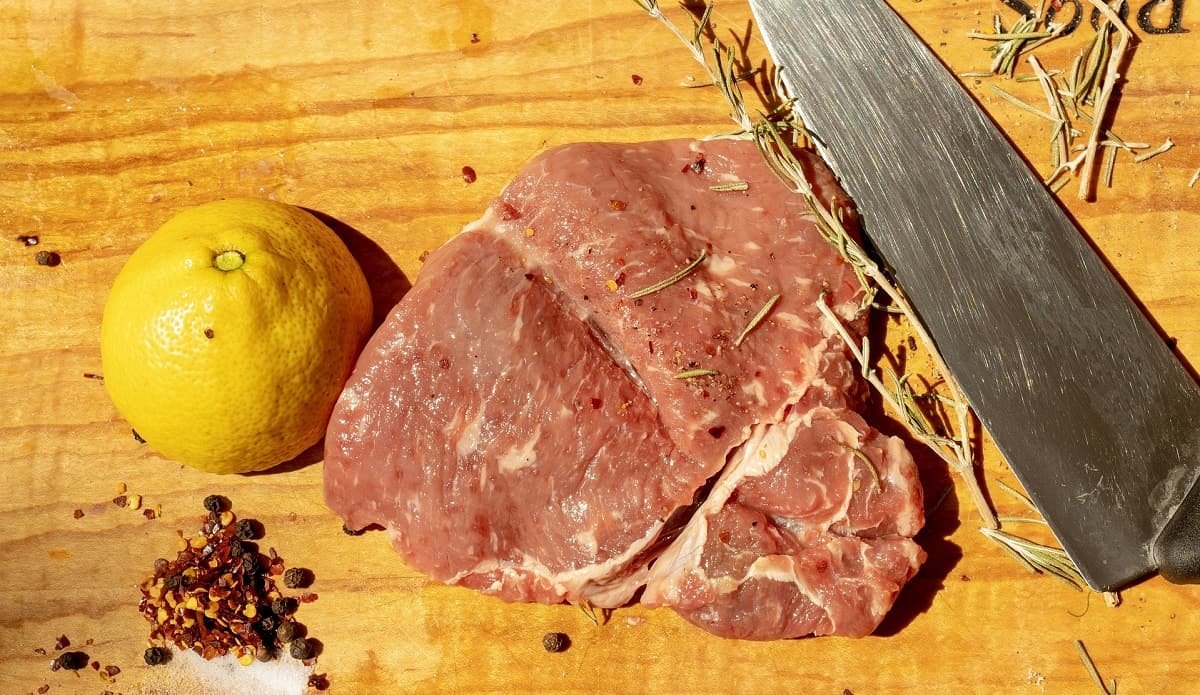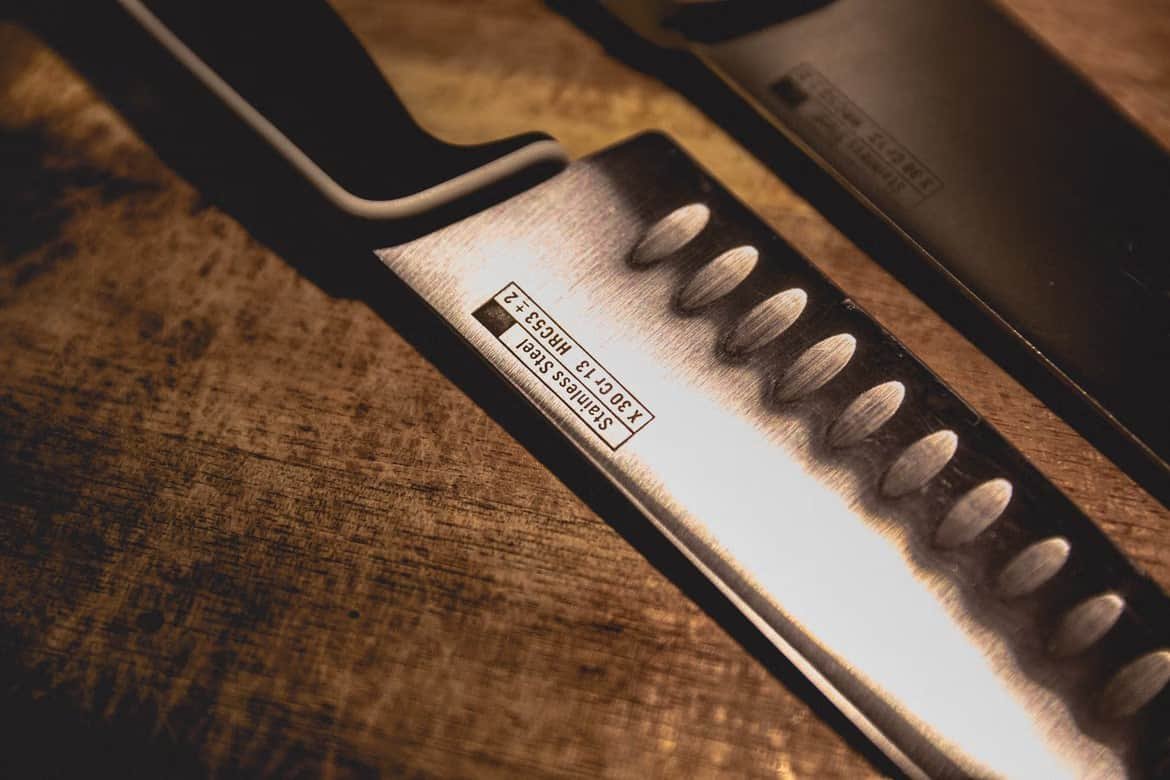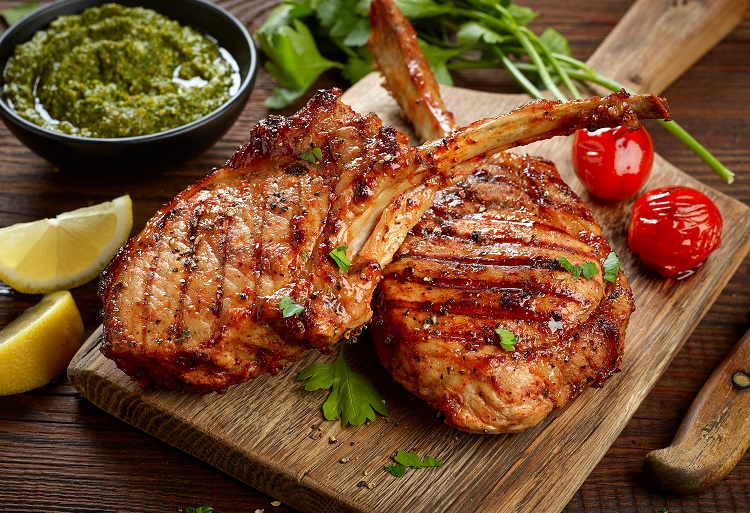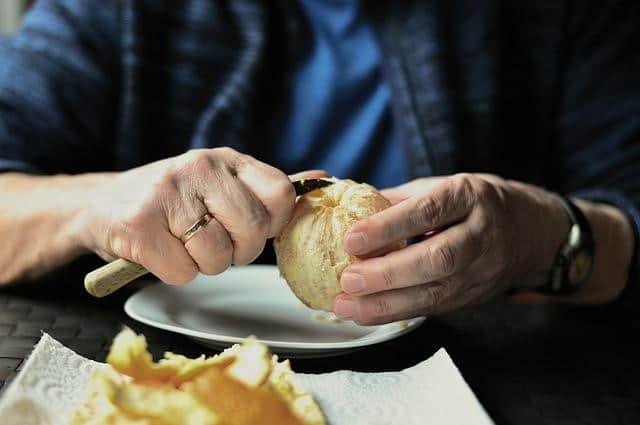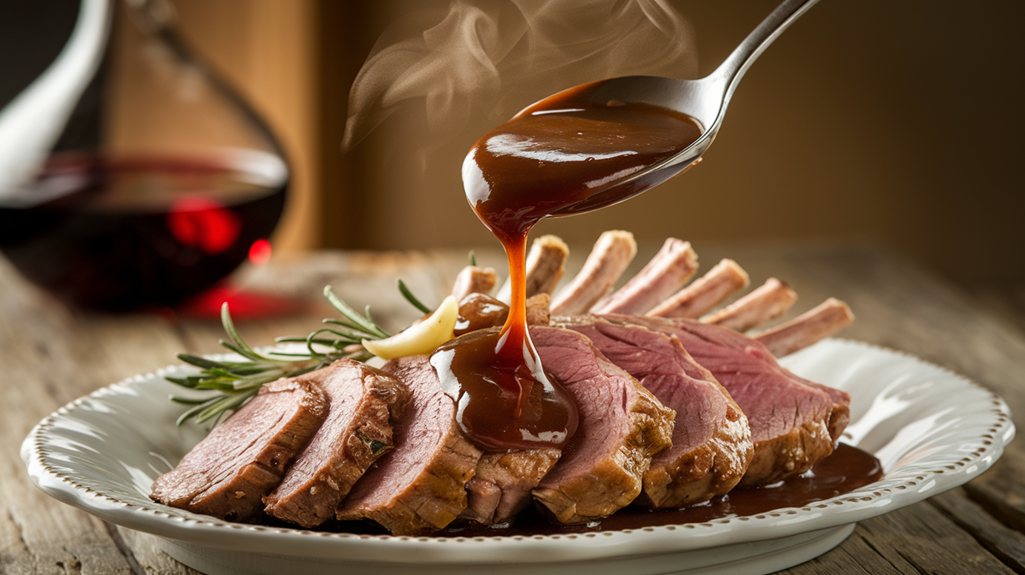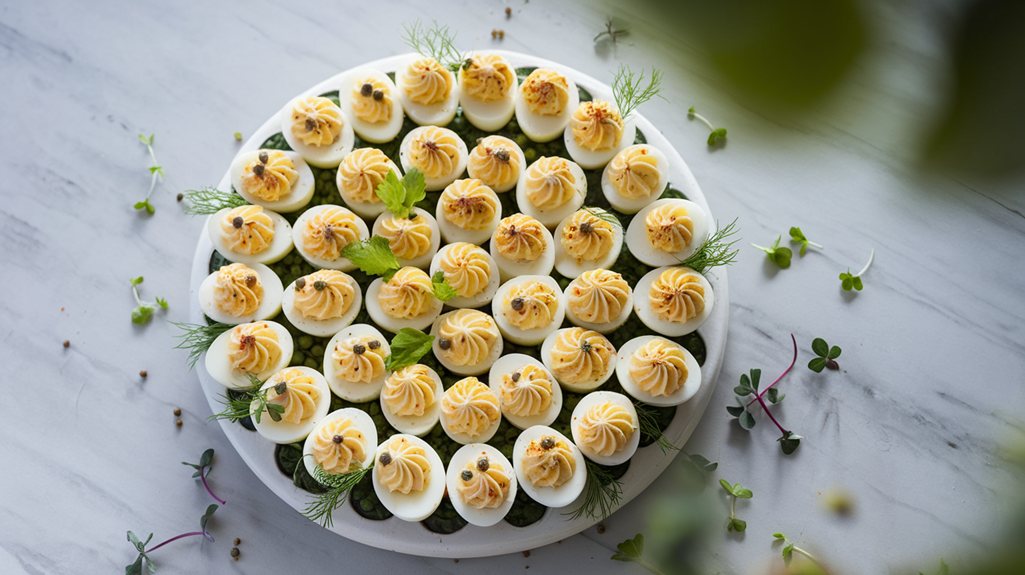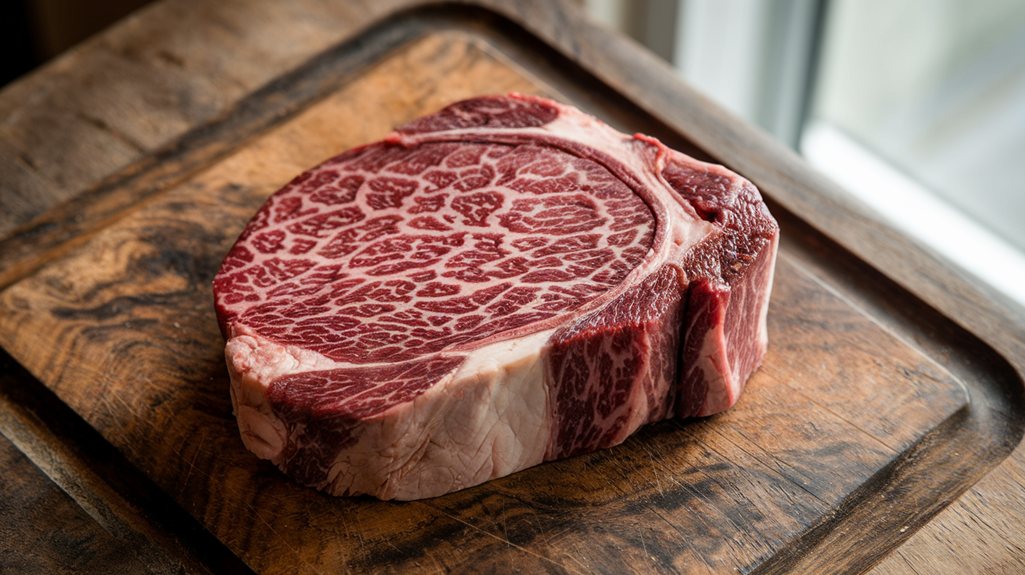There are various cutting boards for various uses, such as cutting vegetables or raw meat. However, we sometimes forget that a cutting board is another essential cooking tool. Often, we tend to focus on finding the best knife from a top-quality brand with the sharpest blade and one made from the most durable metal.
In this article, we will go through everything you need to know so you can choose the best cutting board for meat.
What is the Best Type of Cutting Board for Meat?
Professional Chefs say that plastic cutting boards are easier to sanitize. However, cutting them leaves a lot of crevices in which germs can hide. Wood is more difficult to clean, but generally, it’s more durable, with fewer deep scratches on the surface.
John Boos makes blocks and boards of Rock Maple, American Cherry and Black Walnut. Generally speaking, maple cutting boards are more affordable to buy on Amazon.
Cutting Board for Meat, Wood or Plastic – Things to Consider
It might be surprising to learn that there are many available options for cutting boards. However, before you make a purchase, a few things to think about will help you make a more informed decision.
Consider a few factors, such as the cutting board’s material, size and weight, some other features you need from it, and your budget to narrow down the list of options available.
Material
A cutting board comes in many forms and can be made from various materials. Each has its advantages and disadvantages, but choosing the right board material first will make your final selection more effortless.
Wood
Wooden cutting boards are the most popular option in terms of board material, as they are a common item in most households. A significant advantage of a wood cutting board is that it helps prevent knives from dulling too quickly because wood generally has a softer surface and is easier on the blades during use. They are also very durable and will last for years. Make cutting boards from hardwoods, such as hard maple or sugar maple, walnut, teak, and cherry.
Cutting boards made of wood are also made from natural materials and are environmentally friendly, which is crucial since you are using them for cooking. A wooden cutting board will also prevent bacteria from growing since wood, like most plants, naturally contains antimicrobial agents that kill bacteria quickly.
Moreover, a wood cutting board brings a particular aesthetic to the dining table, which is why many people use it to serve certain food items, such as cheese and meats, for a charcuterie board and much more. However, for sanitary purposes, it is recommended that you have a separate board for your meal presentations and another board for cutting raw meat.
A wooden cutting board’s disadvantage is that it cannot go in the dishwasher. For this reason, the user requires a little more effort to get clean. Moreover, you must ensure that you keep it under certain conditions. If exposed to prolonged heat or moisture, the board might crack or break.
End Grain
While end grain boards are still made of wood, the way they are constructed is unique, singling them out among boards made with other materials. Most wooden cutting boards are either face or edge grain, meaning that hardwood cuts are glued together parallel to each other during construction. With end grain boards, hardwood cuts are placed together in a vertical position, and their end pieces are glued together.
An end grain board is often preferred because it has an even softer surface than a regular wooden board, showing knife marks much faster. End grain boards prevent your knives from dulling as the blade passes through the fibers on the board, and they immediately bounce back after cutting. This cutting board is more durable and less likely to crack or break.
End grain makes a great meat-cutting board. For that reason, many butcher blocks are made from the end grain.
Wedding season is just around the corner! 🎊 Get the perfect #gift for the #newlyweds! https://t.co/nj2GQGOnrE pic.twitter.com/OWm02eeO95
— John Boos & Co. (@johnboosco) April 11, 2022
Bamboo
Another option is a bamboo cutting board item. Like hardwood, bamboo will be more gentle on your knives, preventing dulling for longer than other materials. It will stay durable for some time and could be used for years. A bamboo cutting board will also prevent bacteria from growing.
However, bamboo is generally more rigid than other types of wood, such as maple and oak. A bamboo cutting board on your knives will be harder than a wooden board. They also splinter quickly and might require more frequent replacements than other wooden boards.
Plastic
Plastic boards are often liked for cutting raw meat due to their non-porous surface, which is less easily contaminated with bacteria than wood. However, the ink on their surface could go into your food during use. While it may be very sanitary in terms of bacteria, it is not necessarily the most healthy option available.
The two types of plastic usually used to make plastic cutting boards are polyethylene and polypropylene. Each can offer a different quality to the board, making it softer, more durable, rubbery, etc.
A significant disadvantage of a plastic board is that it is not very durable. It has a meager resistance to any scratches or stains. It also dulls your knives very quickly. More importantly, plastic is not biodegradable.
Like every other product that uses plastic, this type of board harms the environment, and it will take many years until it breaks down because environmental sustainability is essential to many people today. It is good to consider if the amount of money you save from purchasing a cheaper plastic product is worth it.
Glass
Glass cutting boards are also available but not highly recommended. Unlike all the materials mentioned earlier, including plastic, their non-porous surface will not harbor any bacteria and will not absorb any smells. It also tends to be durable enough unless, in case of an accident, where it breaks.
Glass boards tend to be bad for knives due to their rigid surface. They are also quite hard to use. Most glass boards come with a non-slip base, but they are still not as balanced as they should be to use your knife on them safely. If you own more delicate knives, the chipping is very high.
Moreover, their slippery surface raises the possibility of cutting accidents. Also, the noise of steel sliding on top of the glass is not the most appealing sound. Similarly, ceramic boards share the same disadvantages as glass boards.
Composite
Composite cutting boards are an exciting alternative to wooden boards. They are made from recycled materials, meaning they are very environmentally friendly. For that reason, they can have a similar aesthetic to wooden boards. A synthetic resin is combined with wood fibers to create this composite material.
Composite boards are durable and long-lasting, though they can be harder on your knives. Some boards might start to flake depending on the material used. However, composite boards are created as heavy-duty products, so this possibility is not as frequent.
Size & Weight
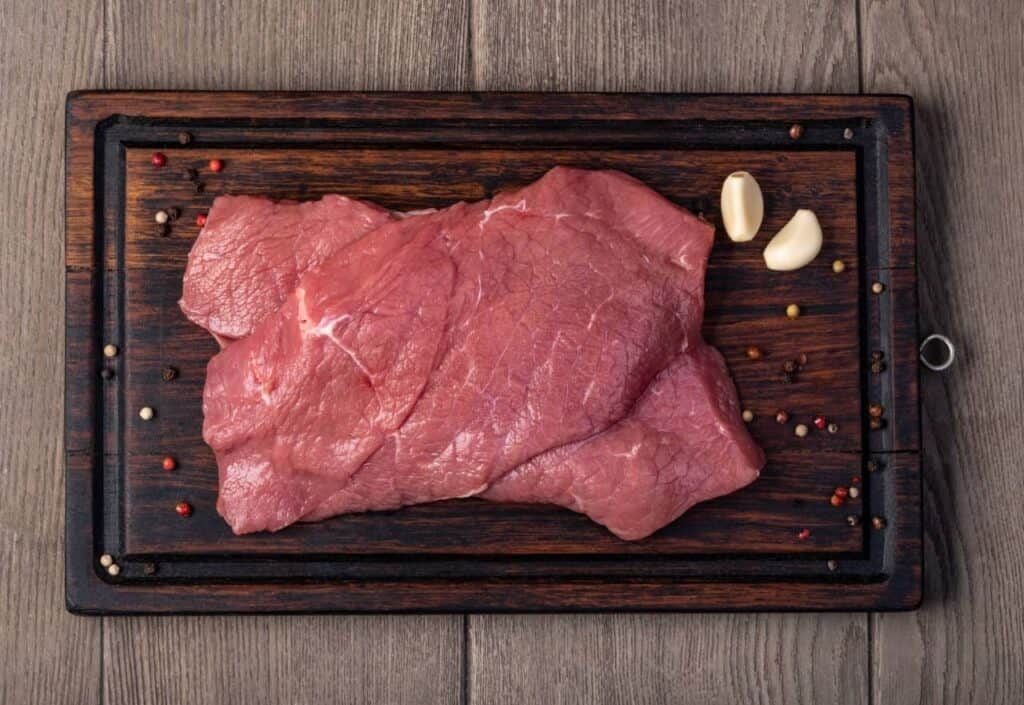
There are a lot of sizes and weights available for cutting boards, mainly depending on the material you choose. Based on the meat you are working with, different sizes can be more comfortable than others. However, selecting a board that provides you with a certain elevation level is recommended, as it will help better your form while cutting and might even prevent accidents.
Generally, a board intended for cutting bigger pieces of raw meat should be larger, heavier, and thicker to allow for more balance while using it. However, a bulky cutting board might be more challenging to store, especially in a smaller kitchen.
You must check the size of your counters and storage spaces before deciding on your cutting board’s size. Moreover, heavier boards can be hard to lift, making their cleaning a more challenging process than it should be.
Juice Groove
While not common in all types of cutting boards, a juice groove is an important feature on a meat cutting board. A groove around the edges of your board allows it to catch all the excess juices that come out when cutting raw meat. This helps you keep your counter clean, as the groove keeps all the fluid within the board. Letting the juice inside the groove also makes the center of the board less messy, which helps you keep your hands cleaner and less sticky while cutting.
Of course, a juice groove inevitably decreases the space you have to work with compared to a flat cutting board. Flat boards are great for cutting vegetables, but if you cut more juicy material like meat and even veggies like tomatoes, a juice groove will help you keep everything around you much cleaner.
Non-Slip Edge
Another great feature of a cutting board is non-slip edges. It is not uncommon for a cutting board to slip on your counter while you use it, regardless of the material used to make it. This can be dangerous as it may cause an accident if you are not too careful.
Thankfully, many cutting boards now come with non-slip grippers, either on the edges or at the bottom, that keeps your board steady on your counter during use. A bulky wood board will have a similar effect, but a slimmer board with grippers is easier to lift and store. Some boards even come with handles that make lifting more effortless.
Price
Due to its popularity and is considered a sustainable item, a wood-cutting board costs slightly more than other boards made with generally cheaper materials. However, considering how long they last, they seem worth the investment.
Because of their unique qualities, end-grain boards are considered the top option among other cutting boards, and many chefs prefer them. They tend to be much more expensive than regular wooden boards. Of course, these boards are even more durable, so they last much longer than others, justifying their higher price.
Bamboo boards are generally considered the cheapest wooden boards but might cost more than other materials, such as plastic.
Plastic boards are the least expensive type of cutting board. They are also very light and thin, making them easy to store. A plastic board can be a great first purchase for an individual with a smaller space or on a budget.
Glass boards are not too expensive, but you might need to replace them frequently because glass is breakable. Therefore, its long-lastingness is relevant.
The price of composite boards is not standard. Based on the type of material used and the size of the board, it can be an affordable product or a highly-priced product.
Maintenance
Wooden cutting boards require a little bit more effort than a quick rinse. Thanks to their unique construction, end-grain boards need less effort from the user to maintain their quality. To maintain its good condition, you might have to oil it occasionally.
Much like hardwood, a bamboo board is not dishwasher-safe and needs more than some quick rinsing to get adequately sanitized. It may also require some frequent oiling to maintain its condition.
A plastic board is dishwasher-safe, so it does not require special maintenance. Though, frequent washing through the dishwasher might eventually lead them to warp. Because they frequently sustain a lot of scratches during use, these scratches can also allow bacteria to hide and grow within them. Therefore, you must ensure that your board is clean before using it.
A glass cutting board is easy to clean as it can go into the dishwasher. As long as you make sure it doesn’t break, there is no other type of maintenance that you need to perform.
Composite cutting boards are dishwasher-safe and don’t require any maintenance, such as oiling. They are also quite hard to stain.
Selecting the Best Cutting Board for Meat
As previously mentioned, there are several things to consider when choosing a meat cutting board—picking the right one, from materials and size to features and cost.
Moreover, cutting boards specifically intended for raw meat should not be considered under the same criteria as boards used for other food items because they account for different needs not present with foods such as vegetables.
Hopefully, you know everything you should look for to make a well-informed decision on your new kitchen item.
